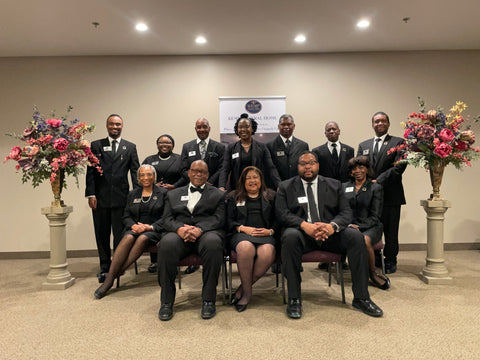As a thanatologist, much of my academic study has centered around the funeral customs of countries and cultures other than my own – White, American, Episcopalian. In 2022, I attended a session on African-American funeral traditions at the National Funeral Director’s Association International Convention and Expo. I’d known very little about the origins of these services, and as I began to research, I uncovered a rich history shaped not only by social, spiritual, and religious beliefs but also by 18th and 19th-century segregation laws and restrictions.
Origins of the Contemporary African American Funeral Experience
Historically, the African American funeral drew not only on traditions that date back to Egypt and West Africa but also on the rituals formed during and immediately following the years of enslavement in the United States. In the early days of slavery, African Americans were not allowed to collectively to mourn their dead; however, over time, rebellions eventually led to a relaxation of this restriction and provided an opportunity for gathering. Drawing upon the practices of their ancestors, they continued the traditions of carefully washing and dressing the deceased's body in their best clothes and holding a viewing for friends and family. A repast – an elaborate funeral meal – typically followed the viewing, service, and burial. At this gathering, people freely expressed both grief at the loss and jubilation at the idea that the deceased was entering a heavenly realm. As one of the rare occasions where African Americans were allowed to socialize, it became the norm for funerals to attract friends and family from far and wide, resulting in large gatherings that sometimes took on a celebratory nature. Commonly referred to as "Homegoings," the deceased was celebrated for going home to Christ and leaving behind the inequities and suffering experienced here on earth.
Jim Crow Laws and African American Funeral Directors
During the Civil War, African American soldiers frequently served as medical assistants. They learned the art of embalming, perfecting their craft. As the funeral profession grew and developed in the late 1800s, Jim Crow laws, designed to separate Black people and White people and relegate Black people to second-class citizen status, drove business to African American funeral directors and away from White funeral directors; many White funeral directors either refused to serve Black families or treated Black funerals as lower priorities. Open caskets were the standard, and the appearance of the deceased was crucial; White funeral directors did not know how to properly style African American hair and cosmetize the many subtle differences in skin tone. By contrast, African American funeral directors prepared the deceased with respect and skill.
African American funeral directors were some of the first and most successful business people serving African American populations in the late 1800s and into the 20th century. Deeply connected to their communities through their ties and affiliations with houses of worship and other organizations, they were trusted neighbors, friends, and successful entrepreneurs.
African American Funerals Today

I was privileged to speak with LaShonda Martin of Kemp Funeral Home in Michigan about contemporary African American funerals. (Kemp Funeral Staff in photo to left.) She told me that viewings are still widely held, typically the night before the service, although more extended viewings are less frequent. It is not uncommon for there to be a first viewing just for the family so they can make sure their loved one appears what is called ‘casket sharp’ (which is also a compliment when paid to a living person - “You look casket sharp!”) and look “like themselves.” Occasionally, the family will request a change of clothes between the viewing into a more elaborate outfit for the funeral. (Aretha Franklin underwent four attire changes over the three days of her viewing and funeral). LaShonda told me that the overall feeling during services these days is of a celebration of life rather than a somber farewell and celebration of release from suffering. Tributes such as rose petal drops or butterfly or dove releases at the gravesites are becoming increasingly popular, and the tradition of horse-drawn carriages transporting the body to the cemetery remains favored. The repast continues to be an important element of the overall service and is another opportunity for a large circle of family and friends to come together. They might involve dancing, a band, or a DJ and can be held in a hall with catering or guest contributions or at a restaurant. LaShonda explains that these elaborate gatherings remain an important part of African American culture and continue to reinforce community and family ties.
It was eye-opening to learn more about these funeral traditions. As I researched and learned about how different African American funeral culture is from my own, I found myself feeling wistful about how American culture generally continues to try to hide death and keep it out of sight. The ability to come together, acknowledge grief and loss, and reconnect with family and friends seems to offer healing in a way that more modern and mainstream contemporary funeral practices (such as memorial services held months after a person dies) do not. However, I think there is momentum to change, and I hope we can draw inspiration from African American funeral culture as we re-evaluate our rituals and ceremonies, and take comfort in the creating of community.

To learn more about grief in the Black community, listen to Grief in the Black Community, a Conversation with Death Doula Darnell Lamont Walker on the Remembering A Life podcast.


